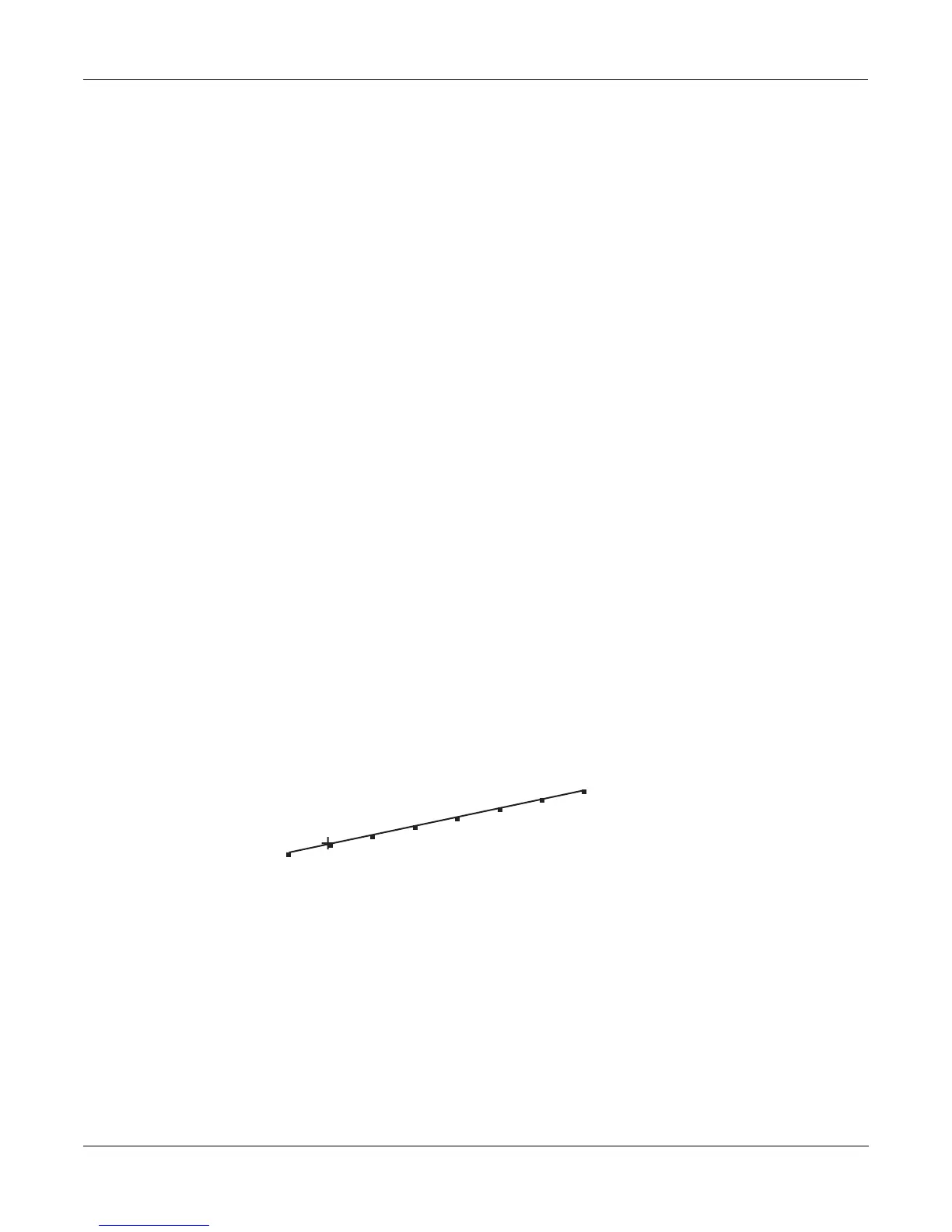Other Editors
The Pressure Map Editor
17-6
The Pressure Map Editor
Pressure maps function in much the same way as velocity maps, but they affect the K2vxÕs
response to mono pressure messages received from your MIDI controller. Like the velocity
maps, pressure maps convert pressure values of 0Ñ127 to new values that are sent to the sound
engine. Also like the velocity maps, pressure messages received at the K2vxÓs MIDI In port
from your MIDI controller pass through the Receive Pressure map, then to the sound engine. If
youÕre using the Local Keyboard Channel feature, the pressure messages pass Þrst through the
Receive Pressure map, then through the Transmit Pressure map, then to the MIDI Out port.
Pressure maps are assigned as the values for the PressTouch parameter in Master mode, the
PressMap parameter on the XMIT page in MIDI mode, and the PressureMap parameter on the
RECV page in MIDI mode. ThereÕs one list of pressure maps, which is used to select the
pressure map for all three parameters. As with the velocity maps, you should use only the MIDI
map (ID 1) for the MIDI mode parameters, leave the value of the PressTouch parameter at its
default value. HereÕs the list of all seven maps. Keep in mind, however, that you should use
only the linear MIDI maps; the internal maps are meant for the K2vx.
1 Linear: The default internal and MIDI pressure map.
2 Easy.
3 Easier.
4 Easiest.
5 Hard.
6 Harder.
7 Hardest.
To edit a pressure map, select one of the three pressure map parameters, and use any data entry
method to set its value to the pressure map you want to edit. Edit the map 1 Linear if you want
to use your edited map with the MIDI pressure map parameters. Press EDIT, and the Pressure
Map Editor page will appear.
The top line of the display gives you the usual reminder of your location. The bottom line labels
the soft buttons, which execute the normal librarian functions of naming, saving, or deleting
the current pressure map, or dumping it via SysEx.
The eight parameters are expressed in terms of the dynamic levels of standard musical
notation. They donÕt correspond to actual volume levels, theyÕre just a reference point (ppp
corresponds to minimum pressure effect, and fff corresponds to maximum). Their values are
expressed as ÒprsÓ units, and range from 0Ñ127, corresponding to the values of mono or poly
pressure messages. The values you set for these parameters determine the pressure message
values that must be generated to achieve the dynamic levels expressed by the parameters.
Values in between those indicated by the parameters will be remapped as indicated by the
curve.
EditVelocityMap|||||||||||||||||||||||||
ppp:|pp:||p:|||mp:||mf:||f:|||ff:||fff:|
15pr|31pr|47pr|63pr|79pr|95pr|111p|127p|
||||||||||||||||||||||||||||||||||||||||
||||||||||||||||||||||||||||||||||||||||
||||||||||||||||||||||||||||||||||||||||
||||||||||||||||||||||||||||||||||||||||
Name|||Save|||Delete|Dump|||||||||||||||

